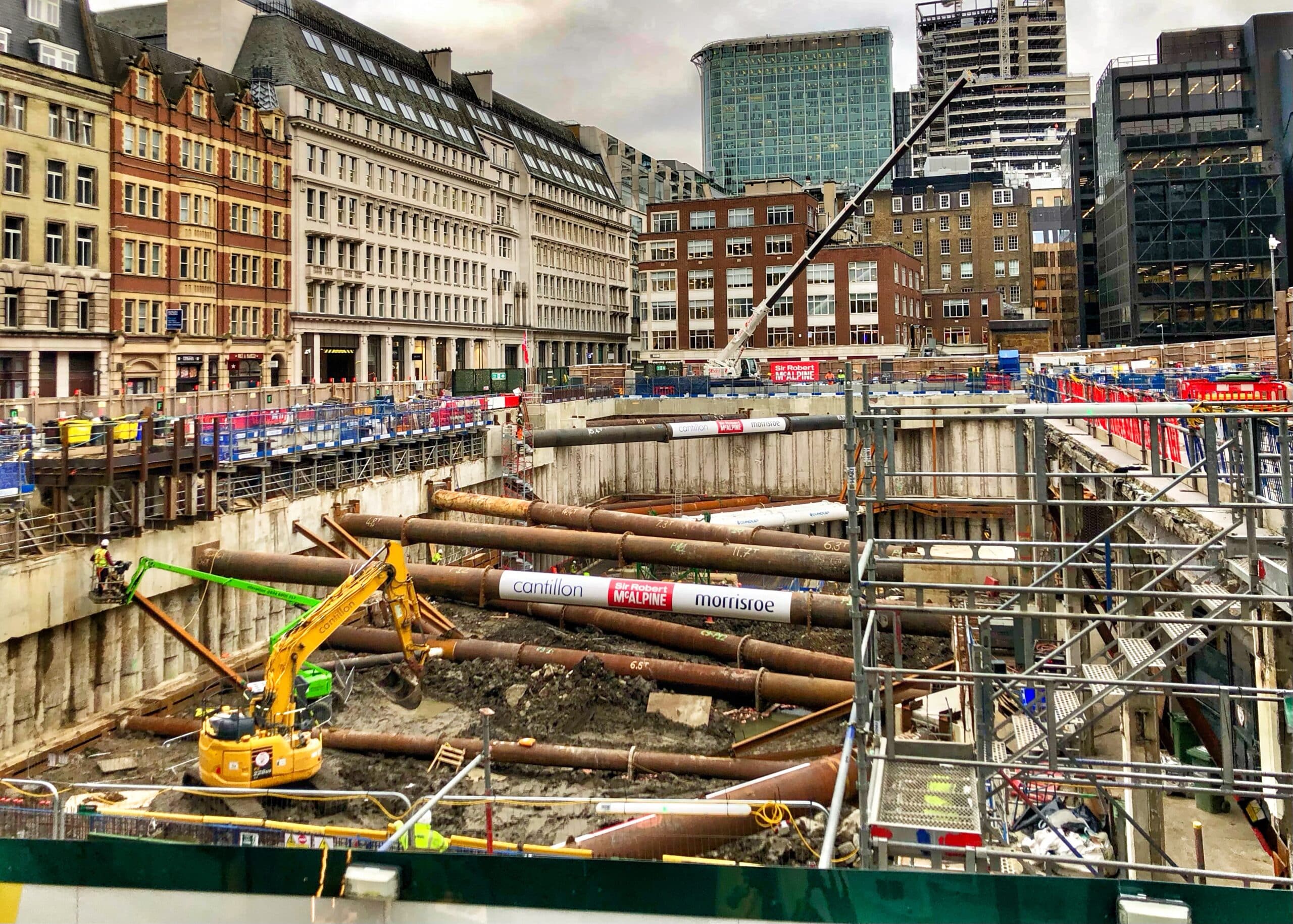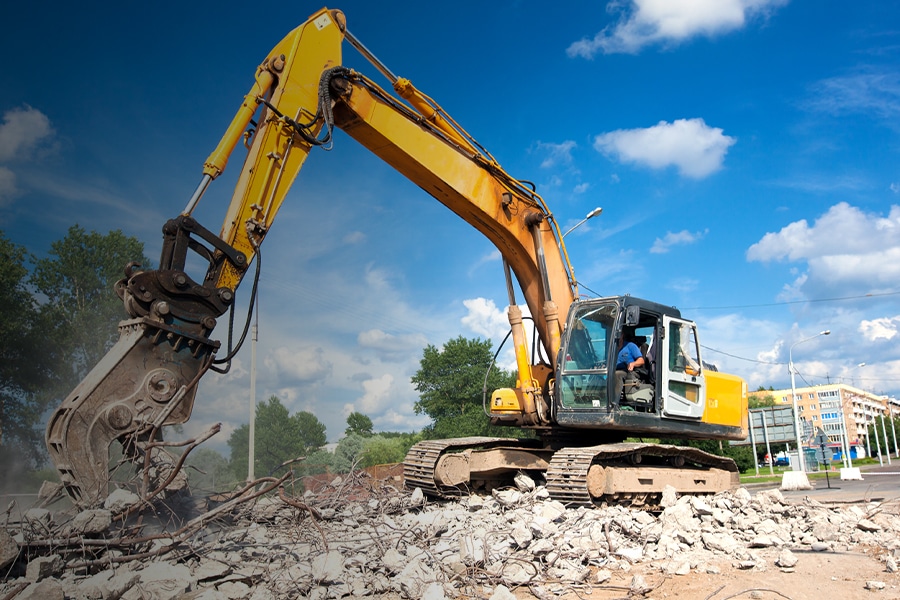What is construction and demolition waste?
When a building is demolished, it inevitably generates waste materials. Walk past the site of a building being pulled down and you’ll see numerous piles of waste—broken brick, large chunks of concrete, even some steelwork.
In times gone by, much of this waste was simply dumped in landfill sites. However, this approach is out of favour, not least because the construction industry is keen to improve its green credentials and prove that it can reduce and reuse, just like many other sectors.
Construction is adopting a more sustainable approach throughout the project lifecycle. Alongside a growing trend to design better so fewer resources are required, firms are becoming increasingly mindful of construction waste recycling and its long-term benefits.
So, what sort of construction waste are we talking about? How much of the stuff is out there? And where does it end up?
The UK government classifies construction and demolition waste as comprising:
- Insulation and asbestos materials
- Concrete, bricks, tiles and ceramics
- Wood, glass and plastic
- Bituminous mixtures, coals and tar
- Metallic waste, including cable
- Soil, contaminated soil, stones and dredging spoil
- Gypsum
- Cement
- Paints and varnishes
- Adhesives and sealants
Meanwhile, according to the Construction Products Association (CPA), construction waste comes from three main sources: demolition, excavation and materials wasted during the construction process.
Dealing with hazardous construction waste
Recycling and reuse of building waste in construction is not always possible. Many of these waste materials, although not all, are classified as hazardous, and strict rules govern how these are handled and disposed of.
Key to dealing with the waste generated through construction activity is to manage its collection and handling safely and professionally.
The UK’s Health & Safety Executive (HSE) highlights the legislation covering the disposal of construction waste, but also warns of the dangers to site workers if waste isn’t properly managed throughout the project.
The HSE says contractors and site managers need to decide at an early stage how waste streams produced during building work will be managed. They also need to identify who is going to be responsible for collecting and disposal of specific wastes produced on site. Problems often arise when company and individual duties are not made clear before work starts, the HSE says.
Dealing with waste is also big business. Some estimates suggest the global construction waste management sector will be worth nearly US$543 billion by 2028.
How much construction waste is recycled?
In 2018, the CPA said the total amount of waste generated in the UK was 222 million tonnes, of which 138 million tonnes was construction and demolition, excavation and dredging waste.
Of these 138 million tonnes, the CPA said 68 million tonnes was construction and demolition waste, of which 92% was usually recovered, or downcycled, with the rest being sent to landfill. Some 58 million tonnes were excavation waste, half of which was recovered and half sent to landfill, while 98% of the 11 million tonnes of dredging spoil generated was recovered, with a mere 11,000 tonnes going to landfill.
How to aim for zero avoidable waste
Construction waste recycling should be a key consideration for new building projects, but they must also tackle the root of the problem. Waste often starts before a spade has even gone into the ground. A study 10 years ago by the University of Salford suggested that 13% of materials delivered to a building site went entirely unused and were thrown away.
A lack of data played its part in this situation, according to some, with different firms using different tracking systems and complicated paperwork to monitor the ordering, delivery and reporting of construction materials. As the industry modernises, such issues will hopefully be a thing of the past.
Meanwhile, with concerns mounting around the environmental cost of all this material, there are those who strive for zero avoidable waste.
According to the Green Construction Board (GCB), part of the Construction Leadership Council, examples of zero avoidable waste in construction include “designing out waste for new buildings by designing for better resource efficiency and for deconstruction and disassembly, efficient manufacturing processes, extending the life of buildings, disassembly for reuse and reducing surplus materials.”
The GCB says that if waste cannot be prevented it should ideally be reused, for example repair or remanufacture; undergo closed-loop recycling, where waste is used as a feedstock in the same process; or be processed via open-loop recycling, where waste is used as a feedstock for a different purpose.
If waste can be managed in this way, the GCB says, “then it is ‘avoidable’ as it has a further use and is not being disposed of to landfill or as energy recovery.”
Construction waste recycling vs. repurposing
There is another alternative to construction waste recycling that converts waste materials into new materials and objects—dubbed “urban mining.” This is where a building is being torn down, and key elements like the structure’s steelworks, instead of being melted down—at considerable environmental cost—are sold to another developer for use in another project.
This happened when One Broadgate in London (see image) was demolished, and 140 tonnes of structural steel was bought by Fabrix, a property developer, to reuse in two projects in South East London.

How can we solve construction’s waste problem?
As the GCB argues, we should aim to prevent waste being generated throughout a building’s lifecycle. “For new buildings and infrastructure … this includes designing a building to be adaptable, longer lasting and capable of being repurposed or deconstructed for reuse.
“For existing buildings and infrastructure, demolition waste can be avoided by extending their lifetime. Manufacturing waste can be prevented by putting material back into the manufacturing process and being more efficient by designing it out.”
The idea of “designing out” waste has been tested with some success. In Scotland, a “resource efficient” house was built, which produced less than five tonnes of construction waste (excluding excavation waste), compared with an average of 13 tonnes waste generated on an average three-bedroom detached house.
The site achieved an overall recycling rate of 96.83%, and 100% of excavation waste was recycled, according to Zero Waste Scotland.
Ultimately, there will always be waste generated by both building a project and demolishing it, but it is encouraging that more is being done to design less wasteful buildings, as well as minimise the amount of waste produced, and that more is being done to recycle it, again and again.











